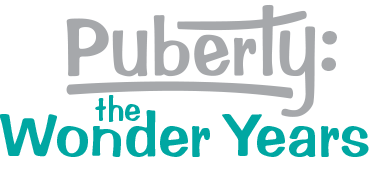Last week, our team had the opportunity to meet with a school district that was preparing to implement the Puberty: The Wonder Years curriculum. During our discussions, one of the curriculum directors raised an important concern that resonated with everyone in the room: “Our teachers are nervous about teaching puberty education. Many of them have never received formal training in this area. How can we assess their comfort level and provide targeted support before they start teaching?”
This question perfectly highlighted one of the most common challenges school districts face when implementing comprehensive puberty education. While the Puberty: The Wonder Years curriculum provides excellent instructional materials, successful implementation ultimately depends on having educators who feel both capable and comfortable addressing these topics with students.

The PLSSE Assessment Tool: A Valuable Resource for Schools
In response to the curriculum director’s question, we shared the Professional Learning Standards for Sex Education (PLSSE) Assessment Tool. This self-assessment instrument, developed by the Sex Education Collaborative in 2018, helps identify areas where educators may need additional professional development before teaching sex education.
The PLSSE Assessment Tool evaluates educator readiness across four essential domains:
- Context for Sex Education – Understanding the benefits of sex education and relevant laws/policies
- Professional Disposition – Examining personal values, biases, and boundaries
- Best Practices – Familiarity with effective teaching strategies and creating safe learning environments
- Key Content Areas – Knowledge of specific topics covered in comprehensive sex education
What makes this tool particularly valuable is that it asks educators to rate themselves on both capability (“How would you rate your capability to do this?”) and comfort level (“What is your comfort level in doing this?”). This dual assessment helps pinpoint areas where teachers may know the content but still feel uncomfortable teaching it, or vice versa.
How It Works in Practice
When we demonstrated the tool at the district meeting, several administrators immediately recognized its potential. Here’s how they planned to implement it:
- Confidential Self-Assessment: Teachers would complete the assessment privately, rating their capability and comfort across numerous indicators.
- Targeted Professional Development: The curriculum coordinator would analyze the results to identify common areas where teachers indicated lower comfort or capability, then arrange specific training to address those needs.
- Individual Support: For teachers who indicated particular challenges with certain topics, personalized coaching or resources could be provided.
- Pre/Post Measurement: By having teachers complete the assessment before and after professional development, the district could measure growth in teacher readiness.
One assistant principal at the meeting shared, “I’ve had teachers tell me they’re uncomfortable discussing certain puberty topics, not because they lack knowledge, but because they worry about using the correct terminology and responding appropriately to student questions. This tool would help us identify those specific concerns and address them directly.”
Addressing Key Teacher Concerns Through Targeted Training
The PLSSE Assessment Tool is particularly helpful in identifying common areas where elementary school teachers often need additional support. Based on our experience working with multiple districts, these typically include:
Addressing Challenging Questions: Many teachers worry about being asked questions they can’t answer. The assessment identifies comfort with “effectively answering three different types of challenging questions” (Indicator 3.4.2), allowing schools to provide specific training on question protocols.
Creating Safe Learning Environments: The tool assesses educators’ ability to “demonstrate three techniques to create an inclusive and affirming learning environment” (Indicator 3.2.1), which is essential for effective puberty education.
Teaching Anatomy and Physiology: Many teachers need support in “demonstrating the ability to use medically accurate terms for sexual and reproductive anatomy” (Indicator 4.6.2) and “explaining the function of individual sexual and reproductive body parts” (Indicator 4.6.3).
Teaching Consent: The assessment evaluates teachers’ understanding of “why consent is a fundamental right for people of all ages” (Indicator 4.2.2), which is crucial for age-appropriate lessons on personal boundaries and bodily autonomy.
How Puberty: The Wonder Years Curriculum Supports PLSSE Standards
The beauty of pairing the PLSSE Assessment Tool with the Puberty: The Wonder Years curriculum is that our curriculum is specifically designed to support teachers in these key areas:
Clear Lesson Instructions and Scripts: As noted in the Value Proposition Worksheet, “Lesson instructions are clear and easy to read. Lessons include scripts for teachers. Teacher Tips provide guidance for success.” These features directly address teacher capability concerns identified in the assessment.
Support for Challenging Questions: The curriculum includes a Question Box strategy that “allows students to ask anonymous questions without embarrassment. Teachers are given guidance in answering student questions, including typical questions and model answers,” addressing indicator 3.4.2 in the PLSSE assessment.
Inclusive Language Support: The Grade 4-6 lessons teach respect for gender diversity and include appropriate terminology, supporting teachers in meeting indicators 4.3.4 and 4.4.2.
Consent Education: The curriculum builds understanding of consent across all grade levels, with Grade 5 lessons specifically helping students “explain consent, personal boundaries, and bodily autonomy by identifying their presence in scenarios” (Synopsis, Lesson 7 objectives).
Next Steps for Implementation
As we wrapped up our meeting with the district, we developed a concrete plan for using the PLSSE Assessment Tool to support their implementation of Puberty: The Wonder Years:
- Distribute the assessment to all educators who will be teaching the curriculum
- Analyze results to identify common professional development needs
- Schedule targeted training sessions before curriculum implementation
- Provide ongoing support during the first year of teaching
- Reassess after the first year to measure growth and identify any remaining needs
The curriculum director concluded our meeting by noting, “What I appreciate about this approach is that it acknowledges that teaching sex education requires both content knowledge and personal comfort. By addressing both, we’re setting our teachers—and therefore our students—up for success.”
If you’re interested in implementing the PLSSE Assessment Tool in your district or learning more about how Puberty: The Wonder Years supports teacher professional development, contact us for more information or visit our website for additional resources.



